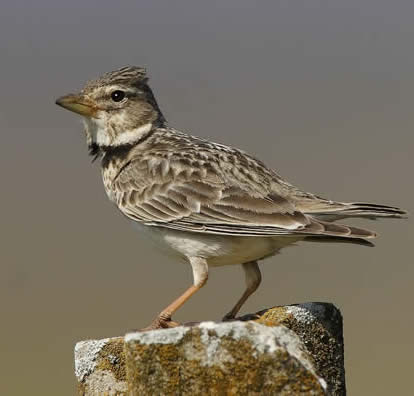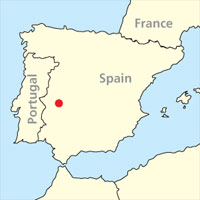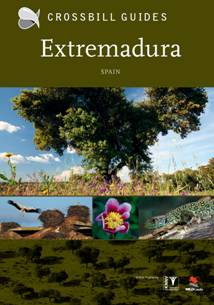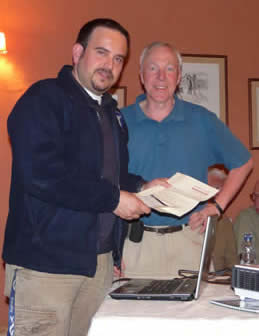Extremadura 17 – 25 March 2026
Wild Central Spain
Extremadura is one of the few remaining truly wild areas of Spain and, indeed, Europe. The region is renowned for its amazing variety of birds of prey, especially in Monfragüe National Park, and special species such as the bustards and larks to be found on the rolling plains of the Spanish steppes.
The plains around Trujillo and Cáceres form part of the great Spanish steppes with their fascinating assemblage of birds. Here we will search for great bustards performing their incredible breeding display; if we are lucky, an astonishing ritual in which the male turns himself into the appearance of a huge white pom-pom of feathers. Other steppe birds in this area are little bustards, stone-curlews and both pin-tailed and black-bellied sandgrouse.
We will visit Monfragüe National Park, some 25 miles north of Trujillo. This is one of the most outstanding areas for seeing birds of prey in a country which is itself probably the best for raptors in Europe. It has the core Spanish population of black vultures, which breed here along with griffon and Egyptian vultures. Eagles are well represented here with Spanish imperial, Bonelli's, golden, short-toed and booted. From the various viewpoints, which make fine vantage points for raptor-watching, other species that can be seen include black stork, chough and rock bunting.
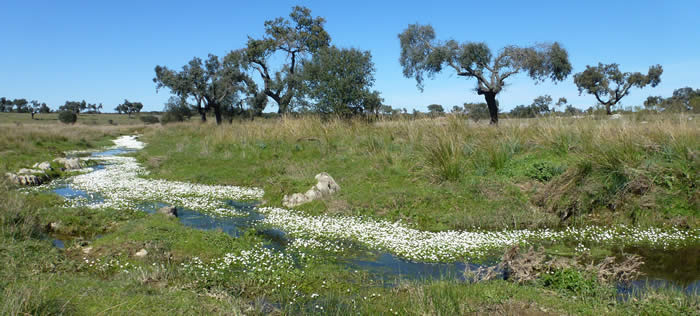
Tozo River, with water crowfoot. Behind is open holm oak dehesa.
The lower valleys approaching Monfragüe hold good stands of holm oak woodland, the ‘dehesa’ or wood pasture that is such a distinctive feature of Extremadura. The dehesa is famous for the wintering cranes, most of which leave in February, but here also are azure-winged magpies, that amazing, colourful bird of the east with an outpost in Spain. One theory was that they originated from birds escaped during trade with China in earlier times, but proof that it is a relict population has come to light with the discovery of subfossil bones.

Great bustards (Steve Fletcher).
Birds
As well as those already mentioned, we should see a selection of the following: Montagu’s harrier, red, black and black-shouldered kites, peregrine, raven, hoopoe, blue rock thrush, little owl, southern grey shrike, red-rumped swallow, woodlark, Sardinian warbler, cirl and corn buntings, spotless starling and great spotted cuckoo.
Flowers
Patches of white Spanish broom and pink storksbills bring colour to fields close to Trujillo. Miniature daffodils include hoop petticoat and angel’s tears narcissi. Early orchids, such as conical, champagne and naked man orchids, irises and lupins are flowering.
Catchfly Silene
psammitis
Other wildlife
Spain is western Europe’s stronghold for wild mammals, including genet, mongoose and lynx, but these are mainly secretive or nocturnal. Stripe-necked terrapins and Iberian wall lizards are more obvious.
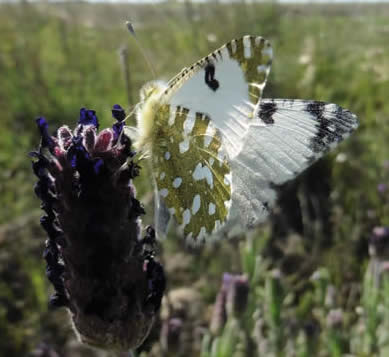
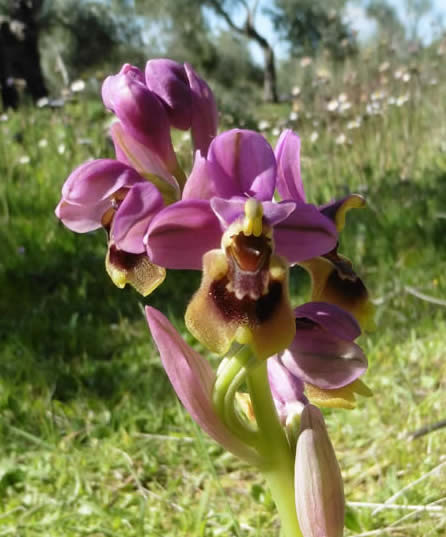
Western dappled white and sawfly orchid, March 2019.
Holiday details
Excursions will include visits to Monfragüe Natural Park, including places such as Peña Falcón and the Tiétar cliffs; the holm oak dehesa region; and exploration of the plains around Trujillo. We also spend a morning in the wonderful old town of Trujillo with its striking central square and breeding white storks and lesser kestrels.
We will stay - our new routine - at leader Martin Kelsey's Casa Rural called Casa El Recuerdo at San Clemente. San Clemente is in the countryside south of Trujillo.
Prices: £1,900 per person in twin room for eight nights (dates are Tuesday to Wednesday).
Single room supplement: £200
En suite facilities
Flights 2026: Scheduled Ryanair flights Stansted – Madrid
17 March FR347 depart Stansted 08:10 arrive Madrid 11:40
25 March FR2629 depart Madrid 18:45 arrive Stansted 20:15
Deposit: £400
Maximum number (one leader): 6-10, to be decided, probably up to 7. We have six rooms reserved. With the usual mix of twins and singles, one minibus, talking seven plus driver comfortably, is the likely group, with Martin Kelsey as guide and driver. If by some chance we have 5 rooms with two people in each, there may be a co-leader/driver.
Conservation project
SUPPORTING
|
Traditional low intensity farming, especially non-irrigated arable farmland but also seasonal grazing, supports much of the special wildlife of Extremadura – and can never be protected just by nature reserves. The conservation of the Spanish steppes and ‘dehesa’ wood pasture is a great priority for the Sociedad Española de Ornitología (Spanish Ornithological Society / BirdLife Spain). |
Cork oak dehesa in Extremadura
Leader
Martin Kelsey OBE is our regular leader for Honeyguide in Extremadura where he lives with his family. Martin and his wife Claudia have for many years run their own Casa Rural called Casa El Recuerdo at San Clemente. Martin's background in ecology includes a three-year study on marsh warblers. After three years in the Amazon rain forest with the British Ornithologists' Union, where he met his Claudia, he worked for BirdLife International, before joining Save the Children.
Martin has been active in nature conservation and as a guide in Extremadura for many years. He is a committee member of GUIDEX, an association of professional bird & nature guides in Extremadura. Martin's blog about 'birds, natural history and life in general' in Extremadura is well worth following.
Olives trees and field flowers, San Clemente.



